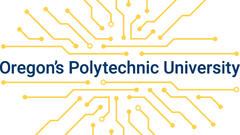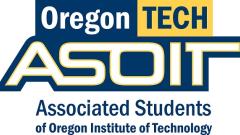Program Accreditation
The Mechanical Engineering Technology Program is accredited by the Engineering Technology Accreditation Commission (ETAC) of ABET, Inc., http://www.abet.org. ABET is a specialized accrediting board recognized by the Council for Higher Education and/ or the Secretary of the U.S. Department of Education.
Program Mission Statement
The Mechanical Engineering Technology Program at Oregon Institute of Technology is an applied engineering technology program. Its mission is to provide graduates with the skills and knowledge for successful careers in mechanical and manufacturing engineering.
Program Educational Objectives
Program educational objectives are broad statements that describe the career and professional accomplishments that the program is preparing graduates to achieve. The Program Educational Objectives of Oregon Tech's Mechanical Engineering Technology Program are to produce graduates who:
- Are able to analyze, design, implement, and maintain practical mechanical systems.
- Communicate effectively and work well on team-based engineering projects.
- Succeed in mechanical and manufacturing engineering technology positions.
- Pursue continued professional development.
Program Student Outcomes
The Mechanical Engineering Technology program student outcomes have been mapped to the five ABET outcomes listed below. A baccalaureate degree program in engineering technology must demonstrate that graduates have:
- An ability to apply knowledge, techniques, skills and modern tools of mathematics, science, engineering, and technology to solve broadly-defined engineering problems appropriate to the discipline.
- An ability to design systems, components, or processes meeting specified needs for broadly defined engineering problems appropriate to the discipline.
- An ability to apply written, oral, and graphical communication in broadly-defined technical and non-technical environments; and an ability to identify and use appropriate technical literature.
- An ability to conduct standard tests, measurements, and experiments and to analyze and interpret the results to improve processes.
- An ability to function effectively as a member as well as a leader on technical teams.
In addition, the BSMET curriculum must include instruction in the following topics:
- Application of principles of geometric dimensioning and tolerancing
- Use of computer aided drafting and design software
- Perform selection, set-up, and calibration of measurement tools/instrumentation
- Elements of differential and integral calculus
- Manufacturing processes
- Material science and selection
- Solid mechanics (such as statics, dynamics, strength of materials, etc.)
- Mechanical system design
- Thermal sciences (such as thermodynamics, fluid mechanics, heat transfer, etc.)
- Electrical circuits (ac and dc) and electronic control;
- Application of industry codes, specifications and standards
- Technical communications typically used in preparation of engineering proposals, reports, and specifications
The capstone experience, ideally multidisciplinary in nature, must be project-based and include formal design, implementation and test processes.
Summary of Program Student Outcomes
The Manufacturing and Mechanical Engineering Technology faculty formally assess the student outcomes summarized in the annual program report. Additional details can be found in department assessment records.
Program Curriculum Map
The curriculum map for the Mechanical Engineering Technology program can be found on the catalog web page on the Oregon Tech website, www.oit.edu/catalog.






